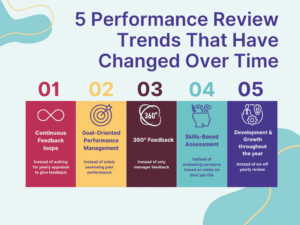In today’s competitive business environment, organizations are increasingly relying on teams to achieve their goals. However, simply assembling a group of talented individuals is not enough. Team cohesion is essential for maximizing team effectiveness and achieving desired outcomes. In this blog post, we will discuss the theory, key facts, strategies, and examples of team cohesion in the workplace.
Theory of Team Cohesion
Team cohesion refers to the degree to which team members are connected and share common goals, values, and working styles. It is a multifaceted construct that includes emotional, cognitive, and behavioral components. The theory of team cohesion posits that teams that are more cohesive are more effective because they are better able to work together towards a common goal.
Key Facts about Team Cohesion
Here are some key facts about Team Cohesion. Understanding what team cohesion is, will help you to create cohesive and effective teams that can work together to achieve success.
1. Cohesion Can Vary Over Time
Cohesion is not static and can be influenced by a variety of factors, including team size, task complexity, and individual differences. As team members come and go and the team’s goals and objectives change, cohesion levels may fluctuate.
2. Cohesion Is Multifaceted
Cohesion is a multifaceted construct that includes emotional, cognitive, and behavioral components. Emotional cohesion refers to the emotional bonds between team members, while cognitive cohesion refers to shared beliefs, attitudes, and values. Behavioral cohesion refers to the degree to which team members work together effectively.
3. Team cohesion is positively related to team performance
A meta-analysis of over 100 studies found a strong positive correlation between team cohesion and team performance.
4. Cohesion Can Have Positive Effects Beyond Team Performance
Cohesion can also improve individual job satisfaction, reduce absenteeism, and promote retention. When team members feel connected to each other and the team’s goals, they are more likely to be satisfied with their work and less likely to miss work or leave the organization.

Strategies for Building Team Cohesion
If your team is under performing and usually struggles with interpersonal problems, it probably lacks unity.
The steps outlined below can send your team in the right direction for cohesion enhancement, which in turn will upgrade its efficacy and quality of performance.
If your team is under performing and usually struggles with interpersonal problems, it probably lacks unity.
1. Develop a Clear Team Purpose
Team members should have a clear understanding of the team’s purpose and how they contribute to achieving the team’s goals.
2. Foster a Positive Team Climate
A positive team climate is essential for promoting team cohesion. Encourage team members to get to know each other on a personal level and provide opportunities for team-building activities.
Discover how team workshops can create a safe environment to have an open and honest team dialogue on relational dynamics.
Managers can encourage their teams to meet informally both virtually and physically. A good way is, for example, to schedule a FIKA break (weekly), or to agree to come to the office on the same day.
3. Encourage Communication
Effective communication is essential for building trust and cohesion. Encourage team members to communicate openly and regularly, and provide opportunities for feedback and discussion.
4. Promote Collaboration
Encourage team members to collaborate on tasks and projects. This promotes a sense of shared responsibility and encourages team members to work together towards a common goal.
5. Provide Opportunities for Professional Development
Providing opportunities for professional development helps team members improve their skills and knowledge, which in turn benefits the team. It also promotes a sense of shared learning and growth.
Other interesting reading

Four ways to ensure team cohesion in a hybrid work environment
In recent years, the way we work has changed dramatically. Working from home and hybrid work were first met with a lot of resistance, but this new way of working is now indispensable.

The huge effect of small team rituals
Rituals come in many shapes and sizes. From the weighty religious rituals such as weddings and funerals to the small personal ones such as brushing your teeth before having breakfast (who does that?).
Examples of Team Cohesion in the Workplace
Example 1: A sales team at a software company regularly holds team-building events and encourages open communication among team members. As a result, they have achieved record sales numbers and have a low turnover rate.
Example 2: A project team at a construction company has a clear purpose and goal, and all team members understand their roles and responsibilities. They collaborate closely and provide each other with feedback and support, resulting in a successful project completion ahead of schedule.
Example 3: A marketing team at a startup provides regular training and development opportunities for team members. The team members have a shared vision for the company’s growth and success, resulting in highly effective marketing campaigns and successful business outcomes.
How and Why to Measure Team Cohesion
Measuring cohesion can be challenging because it is a complex construct that involves multiple dimensions, including emotional, cognitive, and behavioral aspects.
These different dimensions of cohesion make it difficult to measure using a single, straightforward approach. Additionally, team cohesion is dynamic and can change over time as team members come and go, tasks and goals shift, and the overall team environment changes. Therefore, measuring team cohesion is not a one-time event but rather an ongoing process that requires careful consideration and attention to detail.
A highly cohesive team is more effective and productive, leading to better outcomes for the organization. By measuring team cohesion, leaders can identify strategies to improve team performance.
Why Measure Team Cohesion?
By measuring cohesion, leaders can identify areas for improvement, recognize successes, and ensure that team members are working together effectively.
Identify Strengths and Weaknesses: Measuring cohesion helps leaders identify areas where the team is excelling and areas where improvements are needed.
Improve Performance: A highly cohesive team is more effective and productive, leading to better outcomes for the organization. By measuring team cohesion, leaders can identify strategies to improve team performance.
Evaluate Training and Development Needs: Measuring team cohesion can help identify areas where team members may benefit from additional training and development opportunities.
Address Conflicts: Measuring cohesion can help identify conflicts that may be undermining team performance. Addressing these conflicts can help improve team cohesion and productivity.
How to Measure Cohesion?
1. Take regular pulses of the teams
Surveys and questionnaires are a common way to measure team cohesion. These tools can assess how team members perceive their cohesion and identify areas where improvements are needed.
With JiGSO Listen, you can measure how your teams feel in terms of psychological safety, team cohesion, inclusion and you can even use your own questionnaires around various themes.
After a pulse campaign, JiGSO Listen will automatically generate performance metrics. These performance metrics can provide insight into how well teams are performing and how effectively they are working together.
2. Observe Teams and Interview Members
Observations can provide insight into how team members interact with each other and how well they are working together.
Interviews with team members can clarify how they perceive their cohesion and identify areas where improvements can be made.



